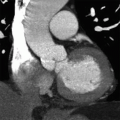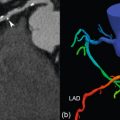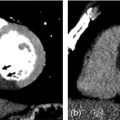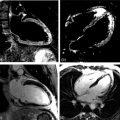
Diagnostic imaging has built quiet momentum in clinical practice, steadily gaining ground as part of everyday primary care. If you’re a post master’s FNP working today, you’re in a much different landscape than your predecessors. No longer do you hover on the periphery of radiology—now, you’re increasingly wired into the heart of that ecosystem. As health systems shift, let’s take a closer, realistic look at how FNPs are threading their expertise directly through imaging practice, supporting both patients and your team with evidence-led decision-making.
We’ve all seen how demand for imaging continues to rise. The population’s getting older and—let’s face it—there aren’t enough physicians to go around. What’s happening in response? FNPs are stepping up, not only filling the gaps, but reshaping how we interact with diagnostic technology. The data backs this up. Between 2013 and 2022, image interpretation duties by non-physician clinicians, including FNPs, grew at an annual rate of more than 9%. That’s an uptick you can’t ignore, and it says a great deal about how trust and reliance on NP skills have changed over the past decade.
How FNPs Are Shaping Imaging Pathways
Let’s explore what’s really changing on the ground. FNPs in the United States have moved considerably ahead of their peers in other countries when it comes to the breadth of imaging modalities they can request and manage. Recent research puts it clearly: FNPs ordered imaging in 2.8% of care episodes, a figure that surpasses the 1.9% seen among primary care physicians. Some states now allow nurse practitioners to interpret up to 20% of office-based diagnostic images—a sharp increase that would have been unlikely even a decade ago.
This isn’t about chasing numbers. It’s about being positioned as a lynchpin in the patient journey. Day in, day out, these advanced practice nurses are becoming a critical filter between initial patient complaints and radiologists’ final reads, ordering ultrasounds, CTs, and MRIs—and then talking families through those results.
Collaboration in Action
But let’s be honest—more autonomy comes with greater collaboration. And for that to work, it’s not just about formal policy or job descriptions. When FNPs take on more imaging responsibility, the dynamic in multidisciplinary teams evolves. Communication must be sharper, more nuanced. Patient handovers tighten. According to reviewed research, teams with active nurse practitioner input see shorter wait times, a reduction in complications, and higher patient satisfaction.
With FNPs often as the primary touchpoint for families, you’re the one who can spot subtle changes in a patient, make sense of flags on an image, and coordinate with radiologists for those next steps. The result is often a smoother journey for patients—not just through radiology, but across every touchpoint in the clinic.
Learning the Ropes
Of course, none of this happens in a vacuum. Training has become more intense, involving everything from hands-on simulation to shadowing colleagues in radiology suites. Post master’s FNP programs are waking up to this demand, folding radiology modules into their curricula—but it’s a work in progress. Nationwide, standards aren’t consistent, especially since authority and responsibility vary greatly by state.
Let’s pause on what many FNPs are doing now. It’s not just ordering tests. Increasingly, practitioners are tapped for procedures like lumbar punctures, biopsies, catheter changes, and tube insertions—routinely in some practices.
That brings up an important point: while the opportunities are expanding, so is the need for robust, up-to-date training and clear guidelines. Without them, you risk not only gaps in skill but also unclear professional boundaries and, at worst, patient safety concerns.
Patient Outcomes and the Value Equation
So where’s the real-world value? You’ll find it where the rubber meets the road: in better outcomes. Greater FNP autonomy in ordering and interpreting imaging doesn’t just catch disease earlier—it supports stronger continuity of care for families and can sometimes spare patients from unnecessary secondary interventions.
Where FNPs are woven into radiology teams, clinics show cost savings and more streamlined workflows. The impact tends to be especially visible in under-resourced or rural communities, where specialists might be thin on the ground. Here, the ability to swiftly interpret an image or arrange rapid follow-up makes a practical, measurable difference.
Here’s a snapshot of where things stand:
- 9% annual increase in non-physician imaging interpretation from 2013–2022.
- 2.8% of care episodes see FNPs ordering imaging, versus 1.9% for physicians.
- Up to 20% of imaging in some practices now handled by nurse practitioners, depending on state law.
- Evidence of improved patient satisfaction and efficiency with NP participation.
Next Steps, Not Silver Bullets
It’s tempting to frame these changes as seismic, but reality’s always more nuanced. The expanding presence of FNPs in diagnostic imaging stands as a logical progression—responding to system needs, leveraging evolving training, and finding efficiencies through collaboration. There’s clear momentum and measurable success, but you’ll hear plenty of ongoing debate about boundaries and uniform standards.
For FNPs, there’s satisfaction in visibly improving care and in standing at the crossroads of technology, families, and physicians. For all of us, the future looks a little more connected—and, if the data continue to hold, a little more effective.
Don’t just take our word for it—leading healthcare authorities like the American Association of Nurse Practitioners recognize these trends and endorse evidence-based, patient-centered expansions of practice. For a more detailed overview, you can explore their position statements and resources.
In this field, progress comes from sound training, mutual respect, and a genuine commitment to good outcomes, not headline-chasing novelty. FNPs are finding a solid, steadily built place within diagnostic imaging—and for many patients, that new normal is already making a difference.
Stay updated, free articles. Join our Telegram channel

Full access? Get Clinical Tree







